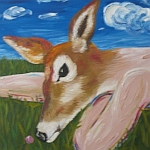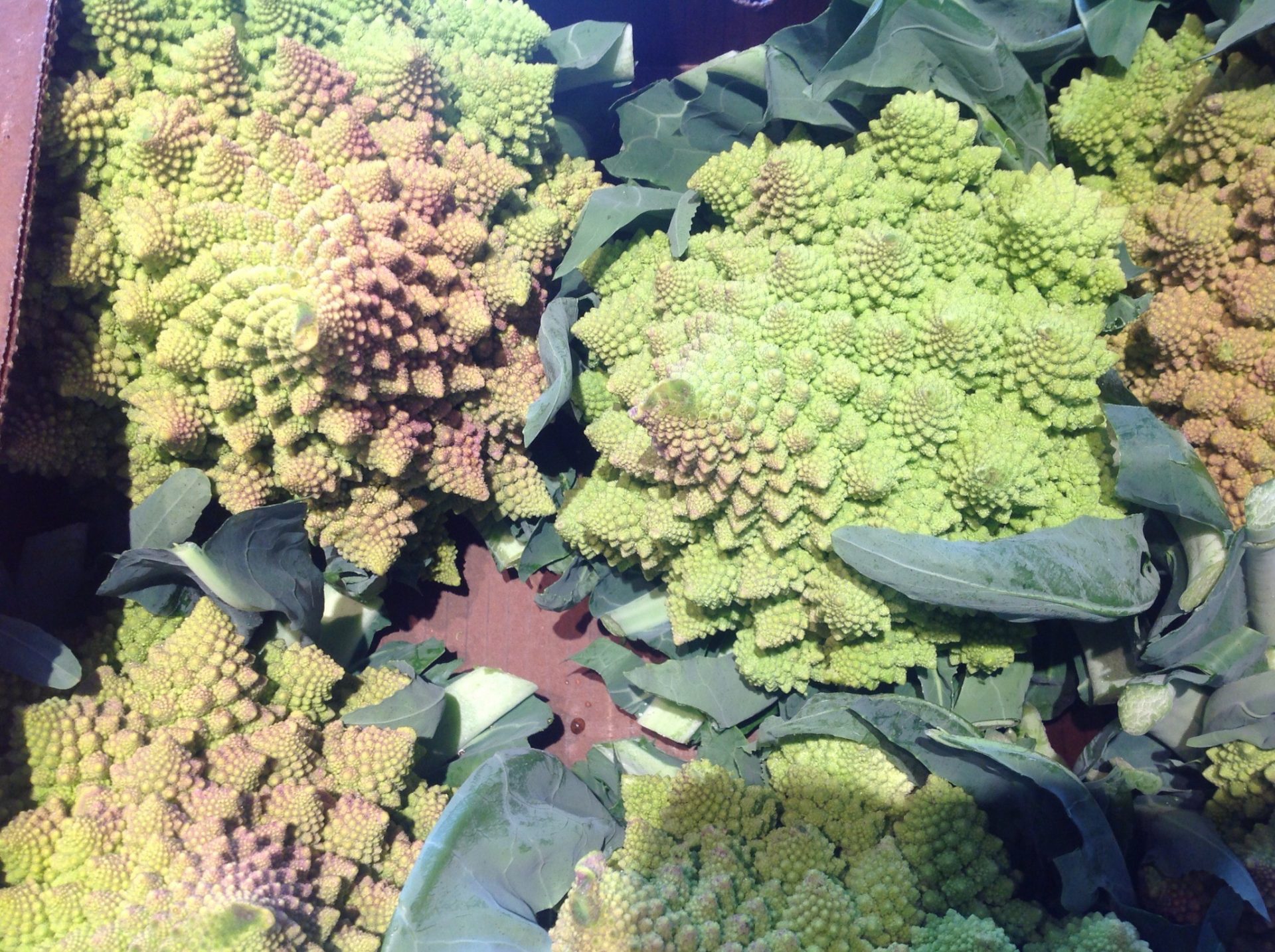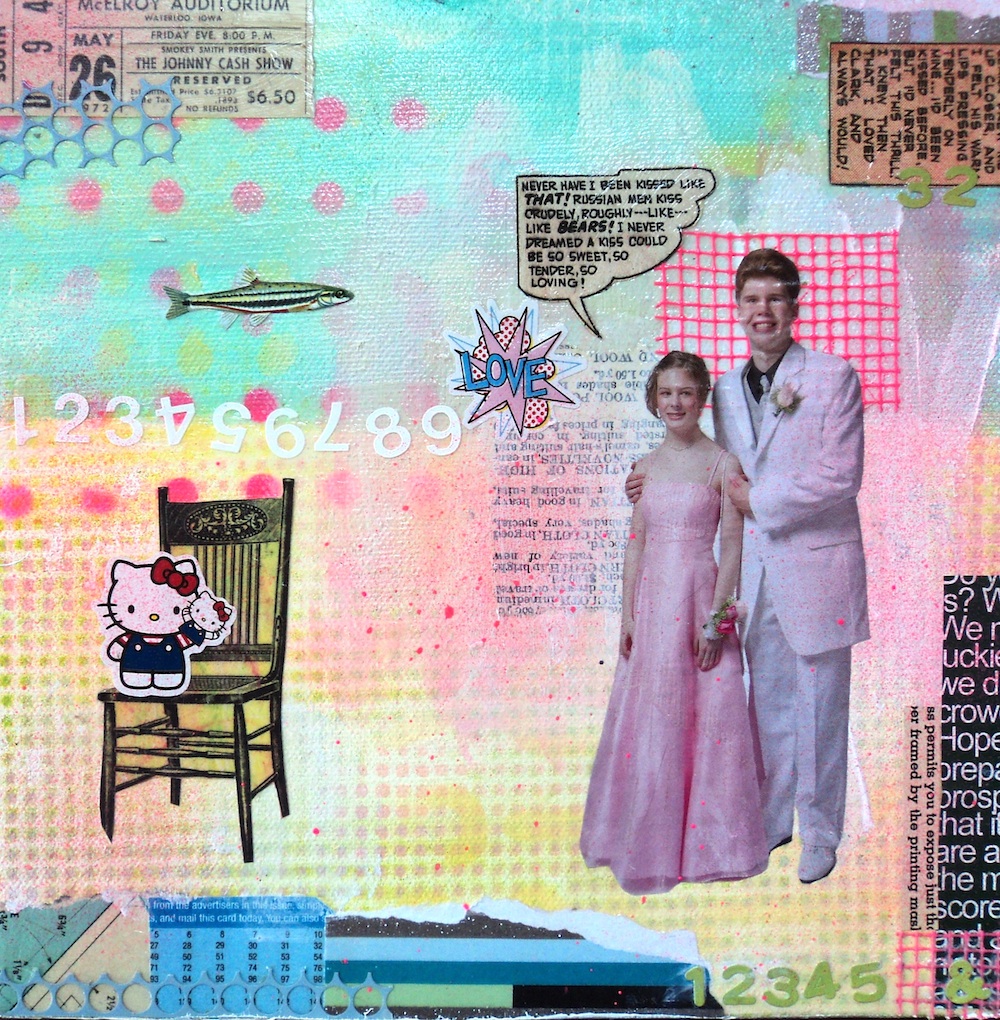 You couldn’t tell by looking at him, but beautiful young women threw themselves at his feet.
You couldn’t tell by looking at him, but beautiful young women threw themselves at his feet.
His protruding belly and the way he wore his trousers hiked up to his armpits did little to illuminate the mysterious attraction. He also had the undying love of a woman with countless suitors to choose from. He was compulsively unfaithful, stooping lowest when he took her little sister as a lover. Yet when his wife moved out and took a lover of her own, he stormed into her house in a rage, waving a rifle.
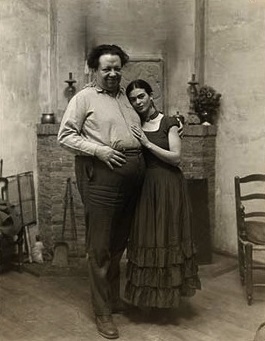 Even so, she continued to write him passionate letters, and they carried out nearly thirty tumultuous years of love and marriage. “…All the rages I have gone through have served only to make me understand…that I love you more than my own skin,” she wrote after deciding to accept his philandering, just to be near him. They remarried later the same year they’d divorced. He considered her the only real thing in his life besides his painting, and referred to his propensity to hurt the one he loved as a “disgusting trait.” “There have been two great accidents in my life. One was the trolley,” the Mexican artist Frida Kahlo said, referring to the occasion as a teen girl when she was impaled by a steel rod, and nearly crushed to death. “The other was Diego. Diego was by far the worst.”
Even so, she continued to write him passionate letters, and they carried out nearly thirty tumultuous years of love and marriage. “…All the rages I have gone through have served only to make me understand…that I love you more than my own skin,” she wrote after deciding to accept his philandering, just to be near him. They remarried later the same year they’d divorced. He considered her the only real thing in his life besides his painting, and referred to his propensity to hurt the one he loved as a “disgusting trait.” “There have been two great accidents in my life. One was the trolley,” the Mexican artist Frida Kahlo said, referring to the occasion as a teen girl when she was impaled by a steel rod, and nearly crushed to death. “The other was Diego. Diego was by far the worst.”
Valentine’s Day just might be the most hated holiday. More often than not, it serves as a reminder of unrequited love and other miseries. The rituals of candy hearts and Dollarama decorations too often leave us clamouring for substance and meaning, not plastic. It’s easy for the unromantic or unattached among us to scoff about contrived commercial manipulation. We don’t want to buy chocolate and roses to mark love just because someone told us to. More, we consider the relentless operatic drama of love, the madness that shrouds all sensibility, and aren’t sure it’s something to celebrate. Sometimes, we contrast troubled, fervent love affairs like Frida’s and Diego’s with our own pedestrian passions and wonder how much our ho-hum stories matter.
But I think we can find a fresh perspective on love, whatever our own state of affairs. Through wine and art we can discover great love stories, renew our erotic muse, and honour our own narratives of happiness and heartbreak. It is through art that we are able to engage our imaginations and access a range of experiences and emotions. And I would argue that the art of contemplation is far richer and more rewarding with wine’s subtle, sensual opening of the soul.
 Ritual lends itself to contemplation, too; give in to the romance of lighting candles and dusting off some old blues records. Slip into something a little more comfortable, and enter the magic doorway of painted love. Begin with a nice bottle of liquid cake- Cupcake’s Red Velvet ($13.45 – LCBO# 260851) is splendid if you have a sweet tooth. If not, indulge in the heady complexity of any red from the Rioja region of Spain.
Ritual lends itself to contemplation, too; give in to the romance of lighting candles and dusting off some old blues records. Slip into something a little more comfortable, and enter the magic doorway of painted love. Begin with a nice bottle of liquid cake- Cupcake’s Red Velvet ($13.45 – LCBO# 260851) is splendid if you have a sweet tooth. If not, indulge in the heady complexity of any red from the Rioja region of Spain.
Let’s start with Frida Kahlo’s paintings of herself and Diego Rivera. The most intriguing ones are self-portraits. In multiple works, the artist painted Diego’s face onto her forehead. One features her wearing a wedding gown. A painting near the end of her life depicts Diego on her breast. What is conveyed here is that her lover is always on her mind, that he is part of her own self, her own face, he is what she sees when she looks in the mirror. Engraving his portrait on her body as she faces death seems to indicate that she is taking his love with her to the grave.
I can conclude from these crystal clear declarations that Frida doesn’t give a rat’s ass what I think of Diego’s doughy jowls. Their love is so profound that she would symbolically tattoo Diego on her body. It’s always important in the Frida Kahlo story to understand how suffering is the main theme of her life. Dreams of becoming a doctor were broken when her body was broken by that streetcar. She was also unable to have children. All the dreams of a woman’s life dissipated in an instant, and a legacy of pain and surgery was set into motion. Frida began painting to occupy the tortured time spent bedridden, and there was one person who saw how important her work was. Diego’s lifelong encouragement of her worth as an artist was not mere validation- in a sense, he gave her back her life.

What the Frida Diego saga offers is the inkling that love can even endure two people who seem more committed to hurting each other than anything else. We see that even painful relationships can meet our specific needs, tailored to the kinds of drama and security we need to be whole.
I see each bottle of wine, too, as a love story to contemplate. The ambitions and the broken dreams are all bottled there. We contemplate art consciously, but wine’s layers of enchantment are veiled mysteries. We consume blindly, but the story of the wine is vital to the soul. We cultivate the struggles and passions of old families and new adventurers. Each bottle brings the sun and rain and the soil where the story is planted into our imagination.
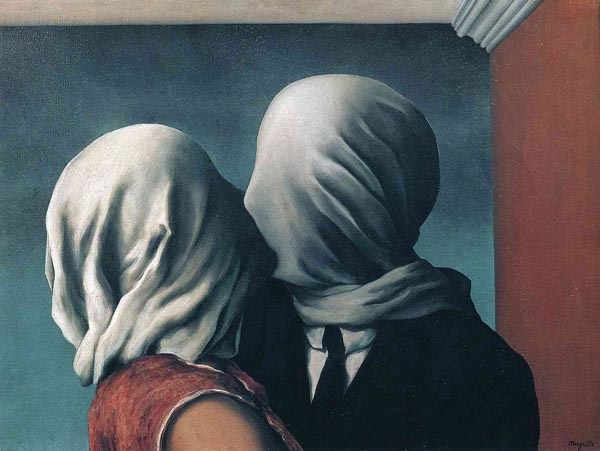
Consider Magritte’s The Lovers, two shrouded heads chastely pecking, separated and anonymous, an intimacy characterized by detachment and sterility. This painting perfectly captures the aspects of relationship that make many of us so cynical. Can anyone ever really know another? More, is love blind? But I see another way to interpret this eerie artwork that is less about alienation and more about the shrouded secrets of wine. Every person necessarily brings buried layers to another, stories that contribute to his or her particular recipe. Like ancient scripts and dusty museum statues, these ingredients are a unique heritage. There are too many of them to unravel. I see beyond the separation and isolation read into Magritte’s masterpiece. Here, perhaps, is a love willing to reach beyond all that separates it, a kiss that accepts secrets and mysteries of another that may forever be inaccessible. I see it as a painting of hope, of love embracing all that is hidden in another.
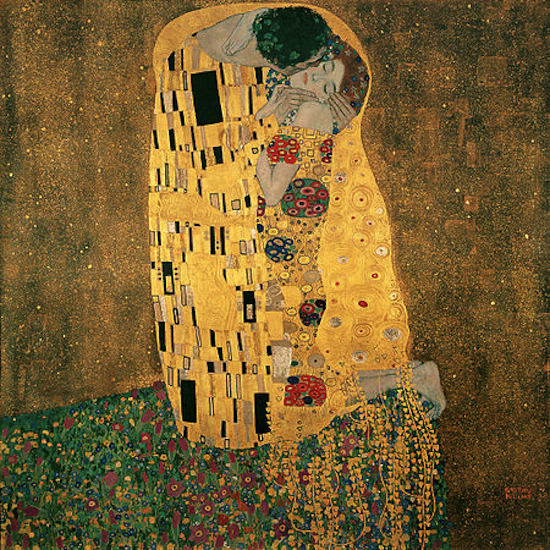
The most famous Kiss, of course, is Gustave Klimt’s bedazzling seduction, a glittering ode to romantic love. The key to the whole painting is how the male cradles the woman in their embrace. He touches her face so tenderly, as if she is a priceless jewel. Her eyes are closed in absolute rapture. The rest of their bodies dissolve into shimmering mosaic-style ornament. Ostentatious and radiant, the work’s glinting gold reflects how Klimt was influenced by the two dimensional effects and the detailed decorative aspects of Byzantine icon mosaics. Transforming his subject matter- women- into icon-like artworks was a stroke of genius.
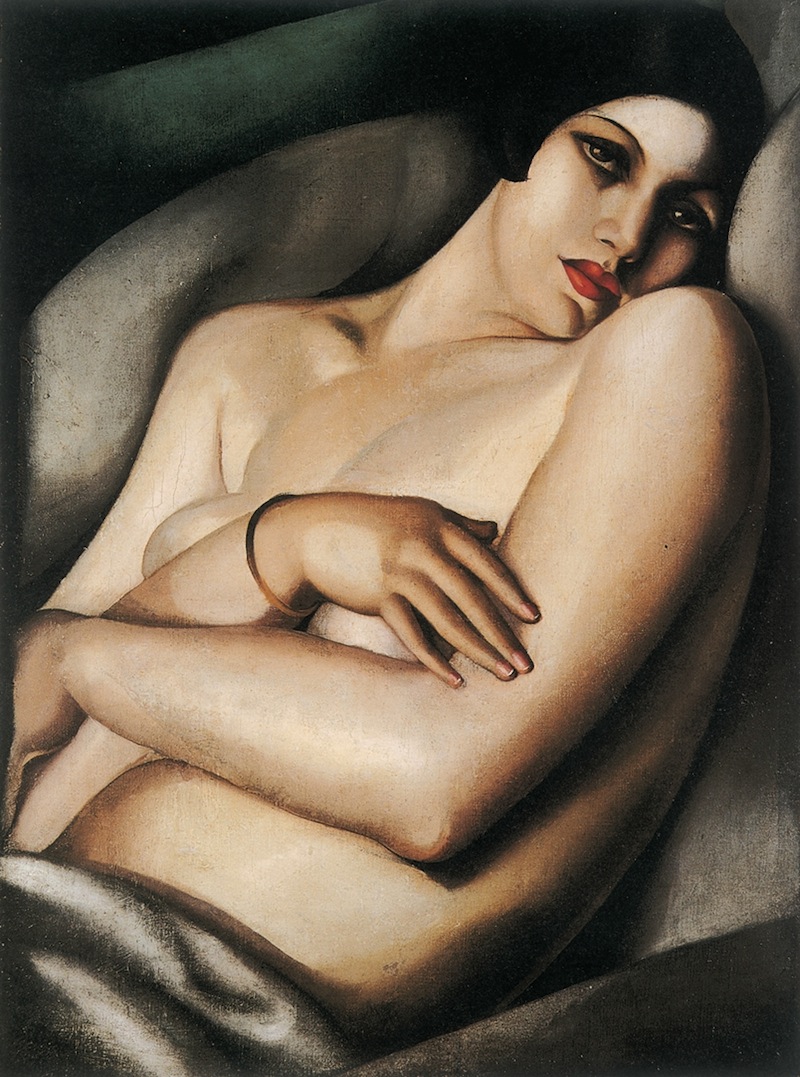
Equally as glamourous as Klimt’s are the opulent paintings of Tamara de Lempicka. De Lempicka was a Polish socialite of haute couture pedigree. She was the reigning queen of Art Deco painters, driven by aesthetics, lines, form and beauty. Her palatial portraits were concerned with glossy veneers. Whether her subjects were individual female beauties or a bevy of entangled nude limbs, each work was sublimely erotic. Yet even in the most luscious and lascivious of her paintings, there is something empty and icy about her rounded angles and exposed breasts- as if her subjects are taxidermy, or rendered in stained glass. Their frosty beauty is forever preserved, these chrome goddesses, but where is the heartbeat? It’s almost as if she captures Gatsby’s great conundrum in the very art of that generation and genre.
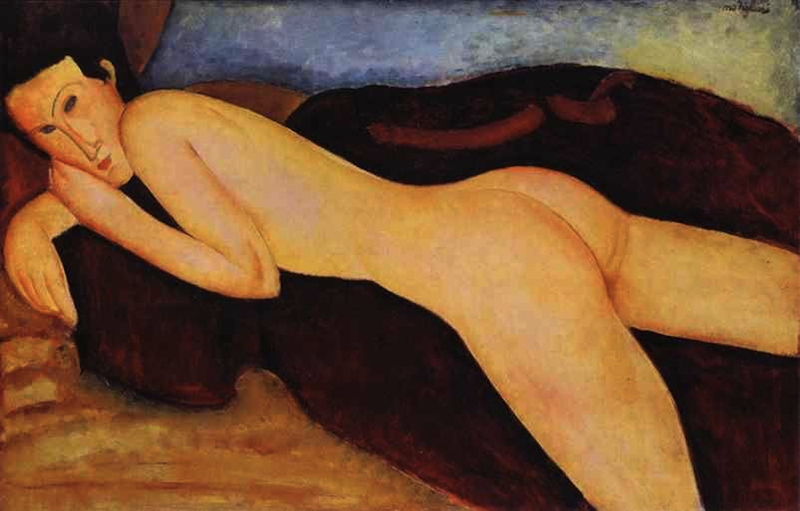
Amedeo Modigliani was dirt poor, filthy, hungry, and riddled with disease. The only thing that the lavish, fur dripping De Lempicka had in common with this commoner were their lifestyles- an enduring love of intoxicants and naked women. Both artists painted in a stylized, elegant, and linear manner. Hers was urban and cinematic and downright dystopian, like Metropolis. Even her curves were angular. Modigliani’s art was angular, elongated, sculptural- but always looked soft. In their separate circles, they painted the beauties they bedded and left a legacy to the world. Many of the Latin playboy’s works are downright haunted- his star-crossed lover Jeanne Hebuterne flung herself from their apartment window the day after he succumbed to tuberculosis. She was 22 years old, and their unborn child died along with her.
 As I savour the chili and chocolate notes of my PKNT cabernet sauvignon from Chile ($10.95 – LCBO# 191866), I ponder the relevance of the larger than life stories of Eros and romantic love found in art. The intensity and decadence can be over the top, but this allows a place for our own follies. Art serves as a form of theatre, providing a surrogate for our own narratives so that we are able to step aside, and examine them more openly.
As I savour the chili and chocolate notes of my PKNT cabernet sauvignon from Chile ($10.95 – LCBO# 191866), I ponder the relevance of the larger than life stories of Eros and romantic love found in art. The intensity and decadence can be over the top, but this allows a place for our own follies. Art serves as a form of theatre, providing a surrogate for our own narratives so that we are able to step aside, and examine them more openly.
The kind of cynicism that prevails around Valentine’s Day is really just a cover for people’s deepest insecurities. We don’t want to make a big deal about love. Yet love is a big deal; love matters most. It’s a tremendous resource of security and happiness, yet it often ends abruptly and leaves us in despair and desolation. It is never certain. Its losses leave us reeling; its absence is a valid grief, too.
This year, coupled or single, go all out with the red ribbons and the hearts. Light hundreds of candles, splurge on wines you have always wanted to try, dress up or what the hell, have a champagne bubble bath. Say yes to chocolate.
Let art take you to places of romantic enchantment. Become giddy from Chardonnay. And if you have a Valentine, share all of this while you have the chance. For as the Afghani poet M.F. Moonzajer says, “It is not the wine that makes us drunk, but the one who brings it and fills the glass.”
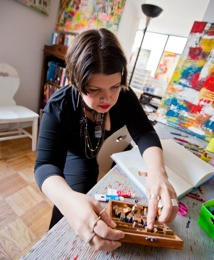 Lorette C. Luzajic is an artist and writer with roots in southern Ontario’s wine country soil. Native to Niagara, at home in Toronto, her work is inspired by wine, cheese, and bleak post-apocalyptic literature. If you missed her at the ROM or the Ritz, visit her at ideafountain.ca. Photo: Ralph Martin.
Lorette C. Luzajic is an artist and writer with roots in southern Ontario’s wine country soil. Native to Niagara, at home in Toronto, her work is inspired by wine, cheese, and bleak post-apocalyptic literature. If you missed her at the ROM or the Ritz, visit her at ideafountain.ca. Photo: Ralph Martin.



